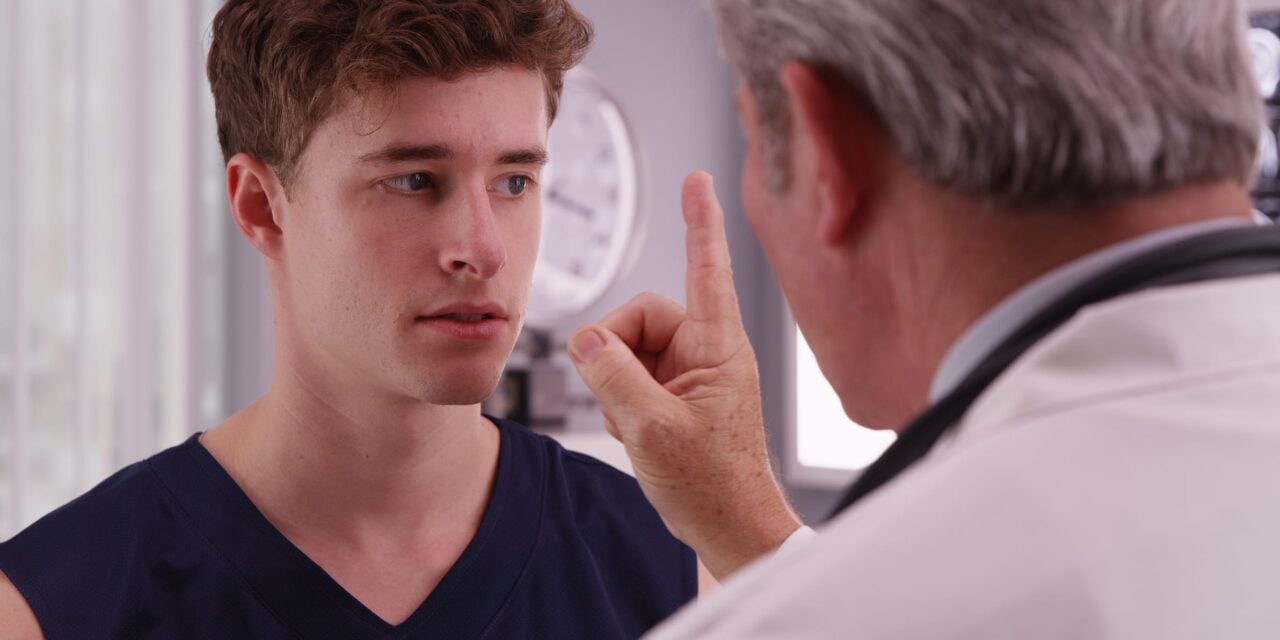Findings show that early symptom patterns and biomarker data may help forecast which mild traumatic brain injury patients will experience 30-day symptom persistence.
An analysis published in JAMA Network OPEN has identified clinical characteristics that predict which concussion patients are likely to experience persistent symptoms 30 days after injury, based on data from the first 1,000 patients in BRAINBox Solutions’ pivotal HeadSMART II trial of its initial test, BRAINBox TBI, for concussion diagnosis and prognosis.
The study examined 803 patients who completed the 30-day follow-up period to determine factors present at initial medical encounters that correlate with prolonged post-concussive symptoms. The patient population was divided roughly equally between males (50.3%) and females (49.7%).
“mTBI is a potentially serious condition, and distinguishing which patients with acute mTBI are likely to recover and be symptom free in 30 days and which patients will suffer persistent symptoms for 30 days or more is extremely difficult,” says W. Franklin Peacock, MD, FACEP, principal investigator and professor of emergency medicine at Baylor College of Medicine, in a release.
Symptom Persistence Rates Remain Stable
The analysis found that selected mild traumatic brain injury (mTBI) patients maintained consistent rates of persistent symptoms over time: 32.1% at presentation, 35.5% at 14 days, and 29.3% at 30 days. Headache rates decreased from 73.5% at presentation to 62.5% during follow-up.
Patients included in the analysis were seen in emergency departments within a median of 90 minutes after injury. The research identified specific symptoms and factors at initial presentation that were significantly associated with increased probability of symptoms persisting at 30 days.
“The study is unique and critical in the short time between injury and presentation, because symptoms change over time and intervention following early identification of patients at risk of 30-day symptoms is likely to have the greatest impact on function,” says Peacock in a release.
Addressing Diagnostic Gaps in Multiple Populations
The study also highlighted diagnostic challenges in elderly patients, where distinguishing mTBI symptoms from neurodegenerative conditions presents clinical difficulties.
“In elderly patients, primarily over 65 years of age, there is a similar diagnostic/prognostic gap in distinguishing mTBI symptoms from neurogenerative conditions such as dementias, including Alzheimer’s disease,” says co-author Damon Kuehl, MD, vice chair for research in the Department of Emergency Medicine for Carilion Clinic, in a release.
The HeadSMART II trial supports BRAINBox TBI, a multimodal test that combines clinical data, neurocognitive testing, symptom reporting, and blood-based biomarkers with proprietary AI algorithms. The test generates an objective score for diagnosis up to 96 hours from injury time and has received Breakthrough Device Designation from the FDA.
Clinical Trial Applications
The research has implications for both clinical practice and therapeutic development. With more than 5.2 million emergency department visits annually in the US involving suspected traumatic brain injury, the need for objective diagnostic tools remains significant.
“BrainBoxTBI has great potential to fill a key gap in identifying patients who actually have an injury, and especially in mTBI management,” says Donna Edmonds, BRAINBox Solutions’ CEO, in a release. “With the emergence of multiple mTBI therapeutics in development, the test has promise in patient selection for clinical trials by identifying those at high risk for consequential, persistent symptoms and for monitoring treatment response.”
The overall HeadSMART II trial has included more than 1,650 subjects with suspected mTBI, with follow-up on symptoms occurring up to 90 days post-event. The company plans to report findings from 90-day follow-up data in the future.
BRAINBox Solutions also announced that the US Patent and Trademark Office has awarded four new patents covering technologies for diagnosis, monitoring, and prediction of acute disorders including mTBI, intracerebral hemorrhage, and Alzheimer’s disease. The patents bring the company’s intellectual property portfolio to 24 issued patents.
ID 67671605 © Mark Adams | Dreamstime.com





